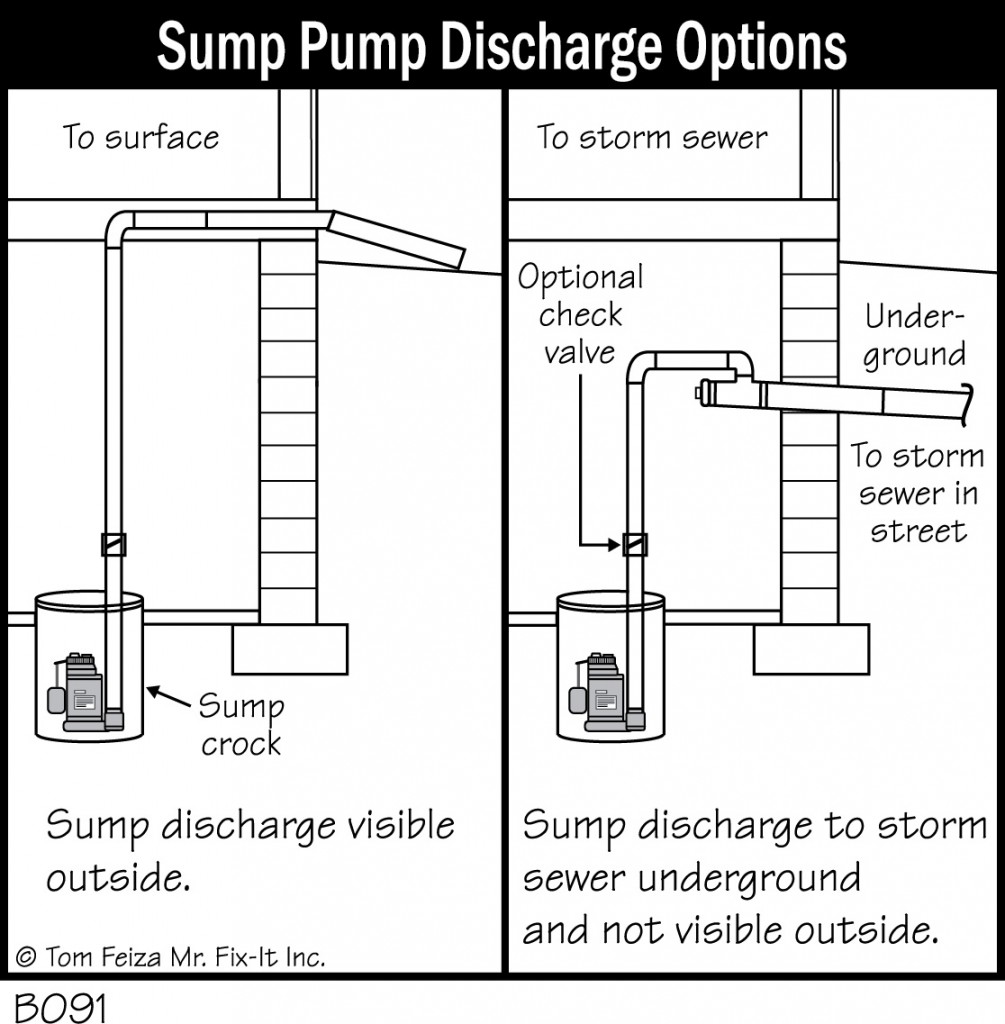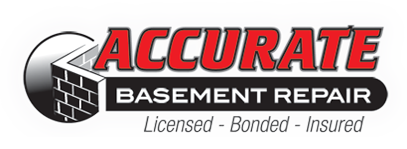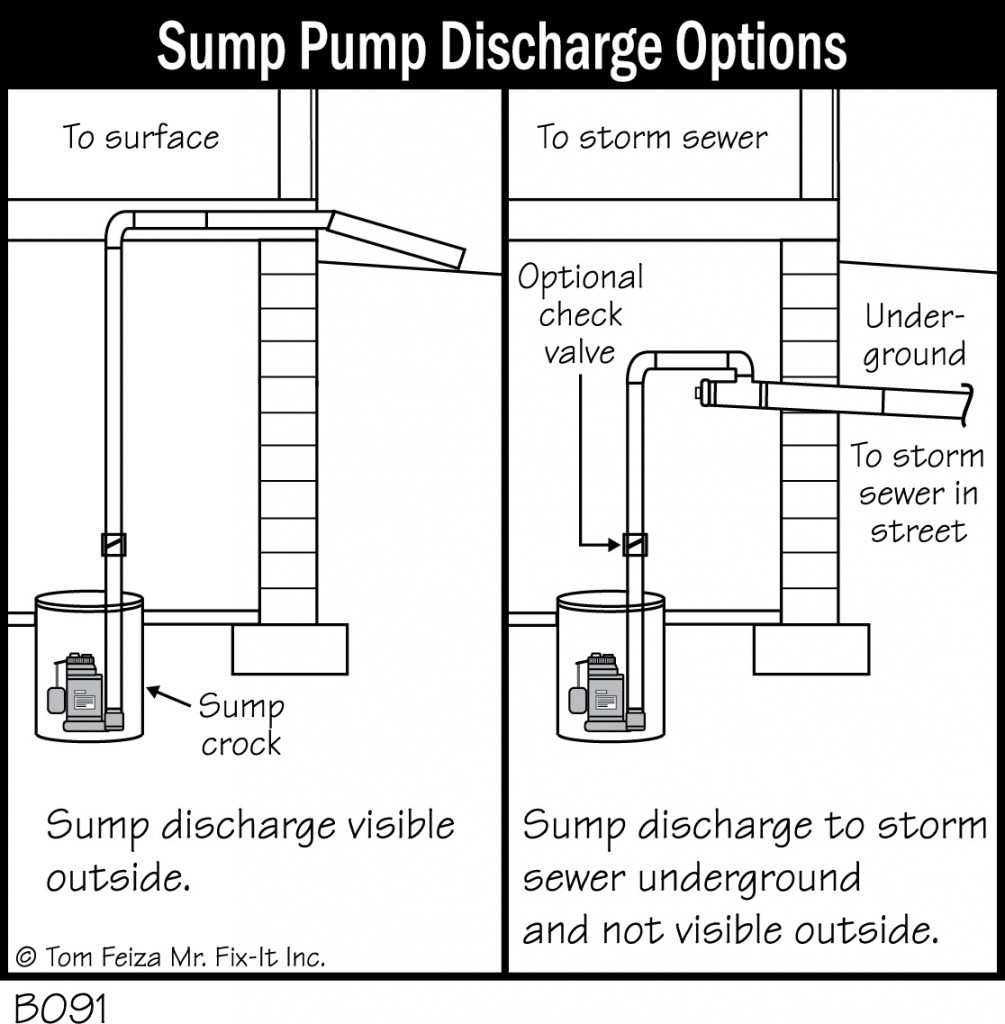A dry basement is great for potential space in a home and reducing airborne allergens associated with mold and mildew. Most problems occur due to poor grading and water seepage. Installing a sump pump and identifying the source of water seepage is the first task for good water management. Here is an overview of the best way to create a dry and comfortable basement.
Sump Pump Overview

Sump pumps can be discharged into a city storm sewer or have a visible discharge outside. Check your local ordinances if you are able to discharge into the storm sewer. An outside discharge works best in heavily sloped yards away from the house. Modern sump pumps should discharge using a check valve if they go into a sanitary sewer or storm drain. The most common problems in sump pumps can be linked to failure in the float device or a bad check valve that allows the basement to flood.
Identifying Grades and Slopes
A neighbor’s slope may directly affect the grade and slope of your yard. Neighborhoods often require swales or steeply pitched grades away from the house into a lower region that goes into a storm drain. Shaping a swale or installing a dry well can solve many problems associated with a flooding yard.
Preventing Water Seepage
Cold climates require additional protection due to the frost cycles that push on the foundation from the soil. These are common sources of seepage. For example, waterproofing a Milwaukee basement may require extra examination of concrete block for cracks or water table levels due to harsh winters. Winter arrives quickly and according to a study from Oregon State University’s Extension Service, slabs and foundations without proper moisture containment can be a common source of mildew in the home. The basement can actually raise indoor humidity levels quickly in temperate climates.
Additional sources of seepage can be found in a shifting foundation due to unnaturally dry weather conditions or poor drain tile. Finding these small leaks may require a professional. Keeping the foundation beds and garden sloped away from the house at a pitch can help as well.





